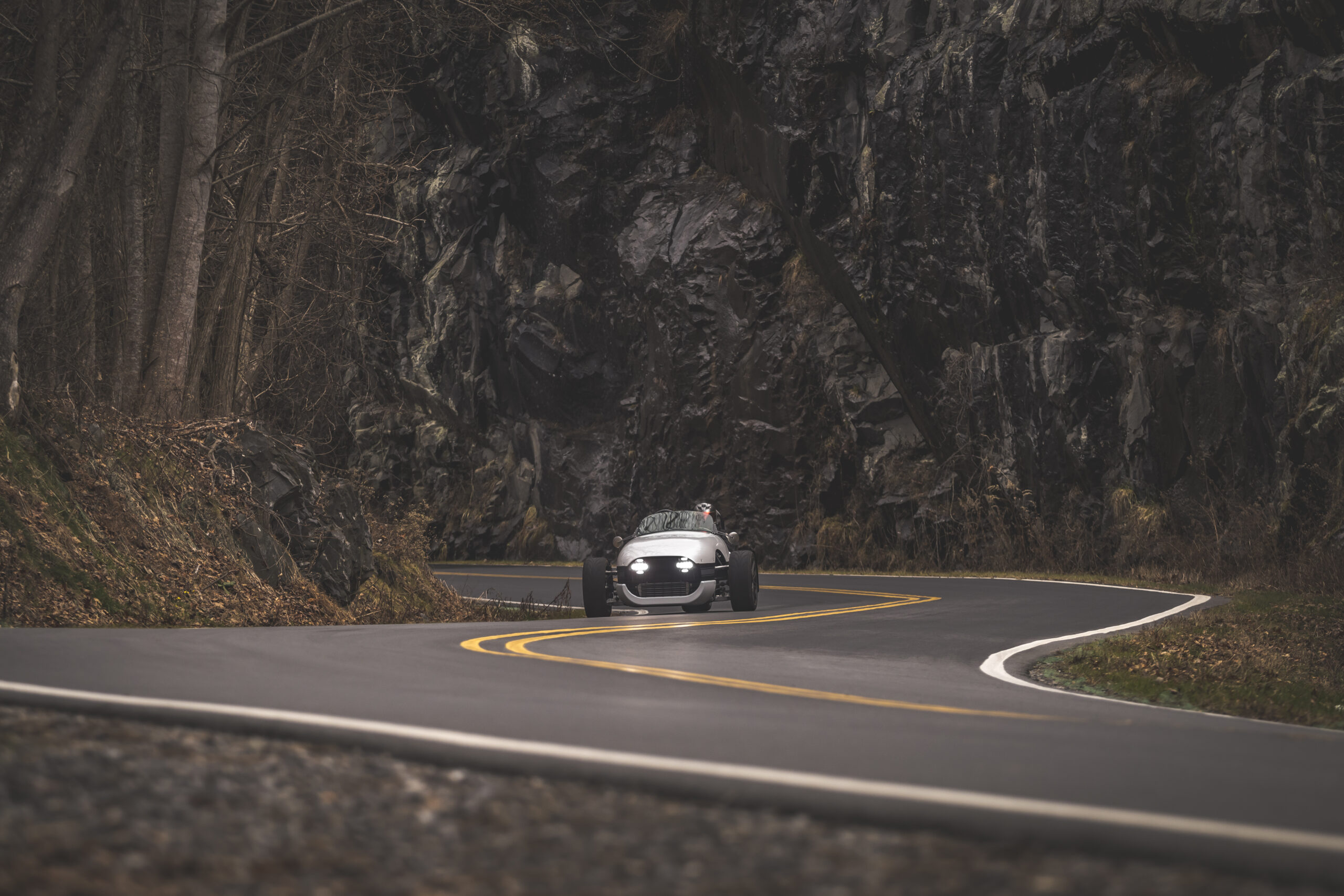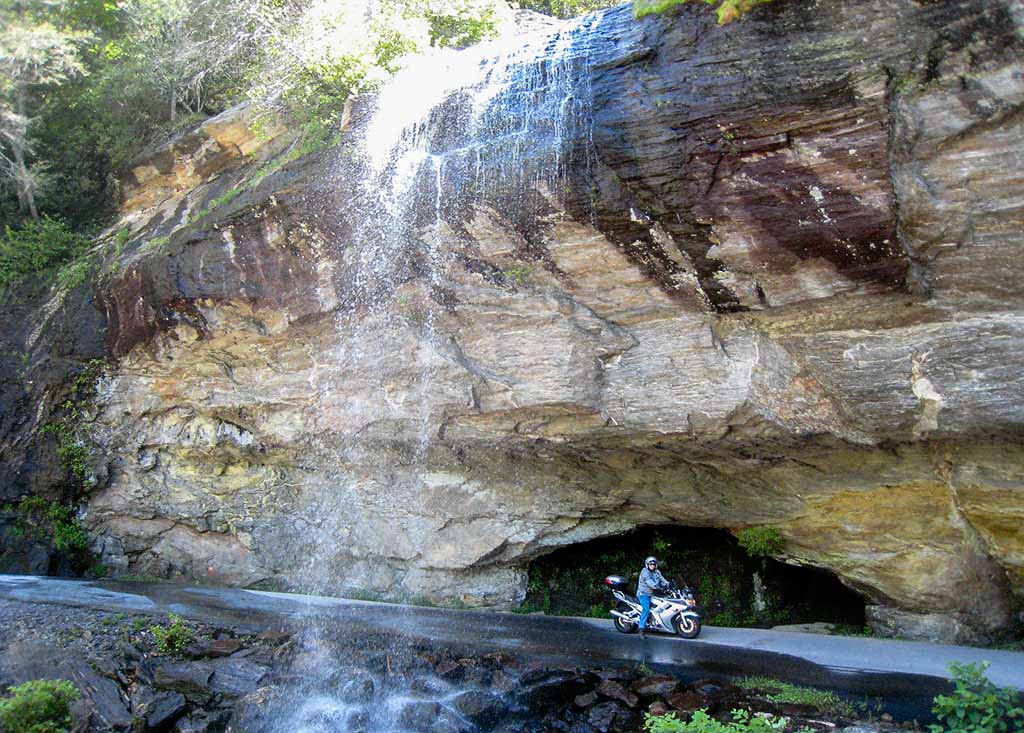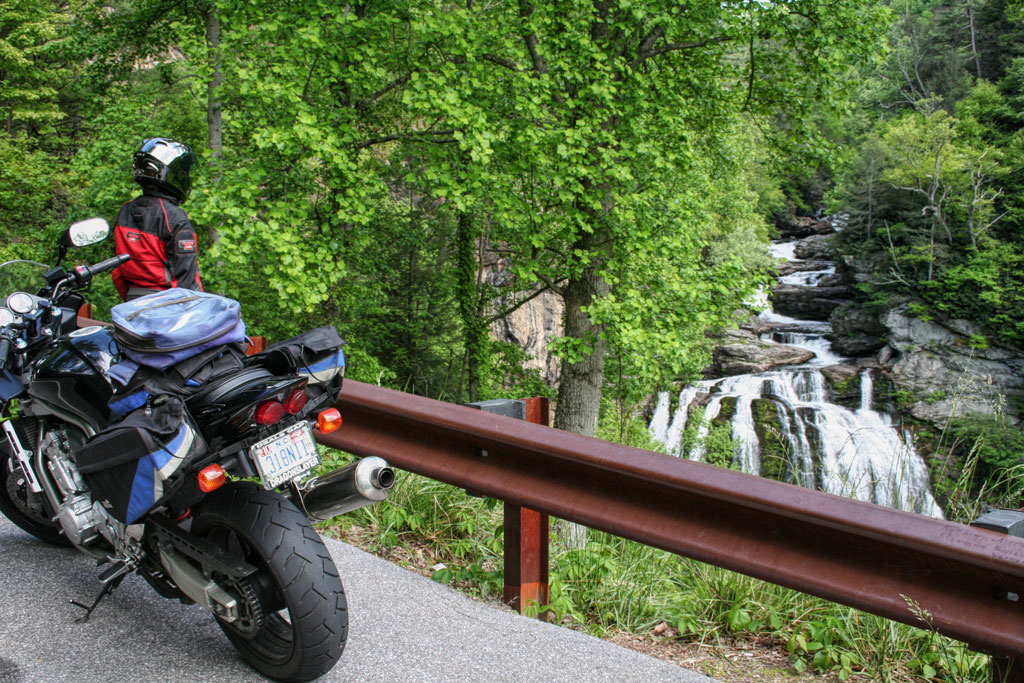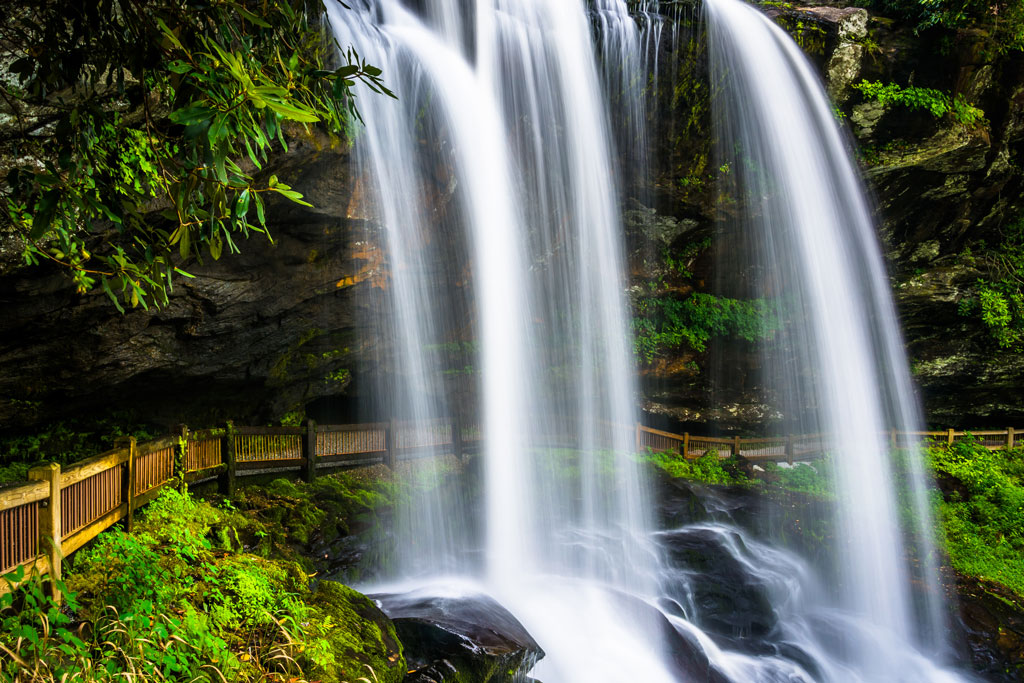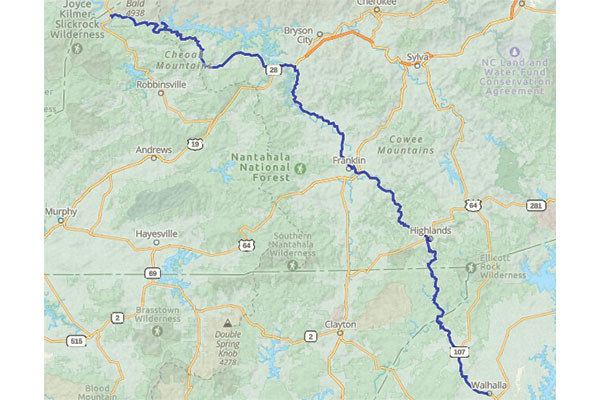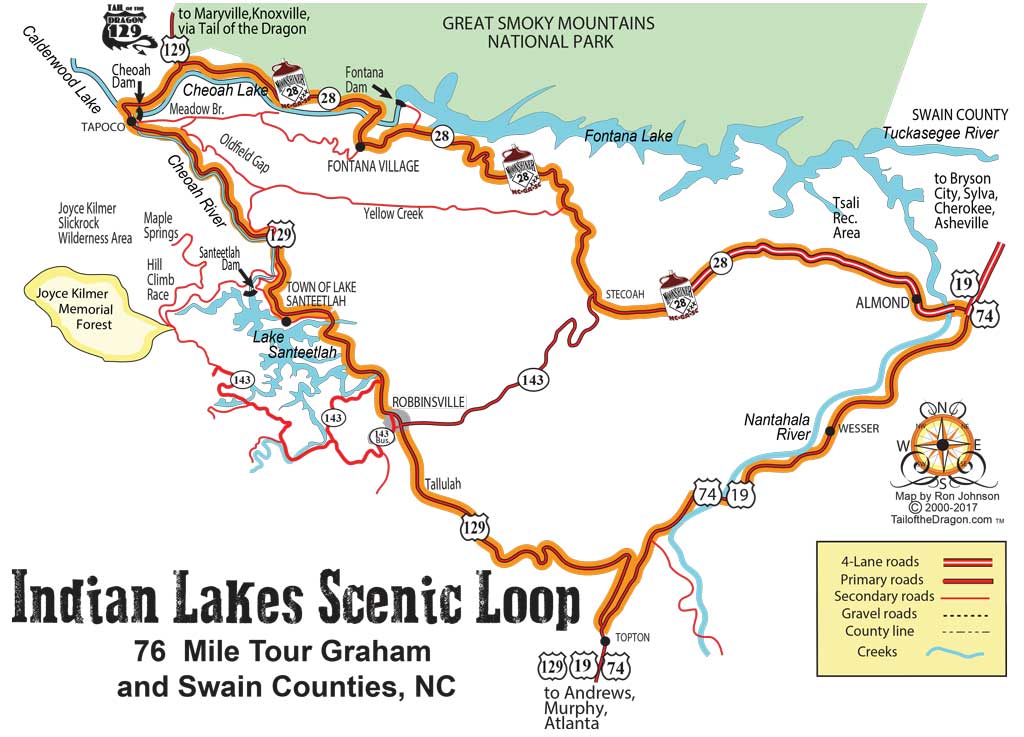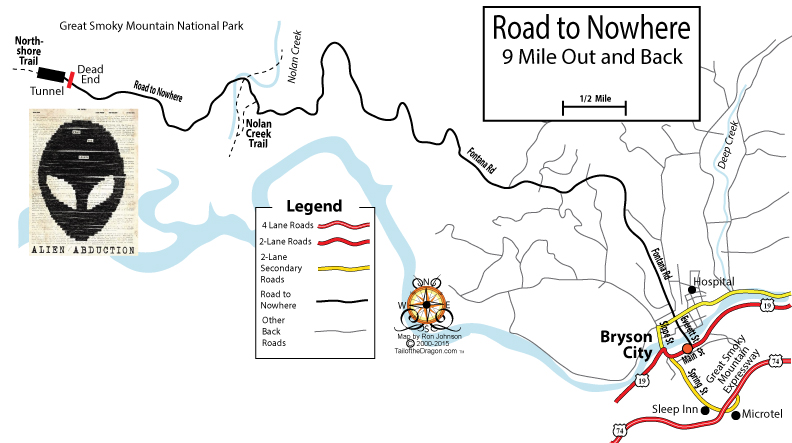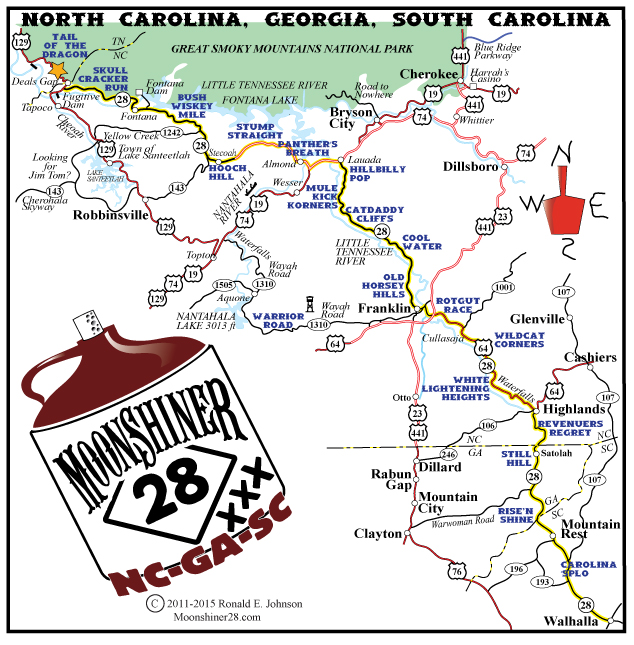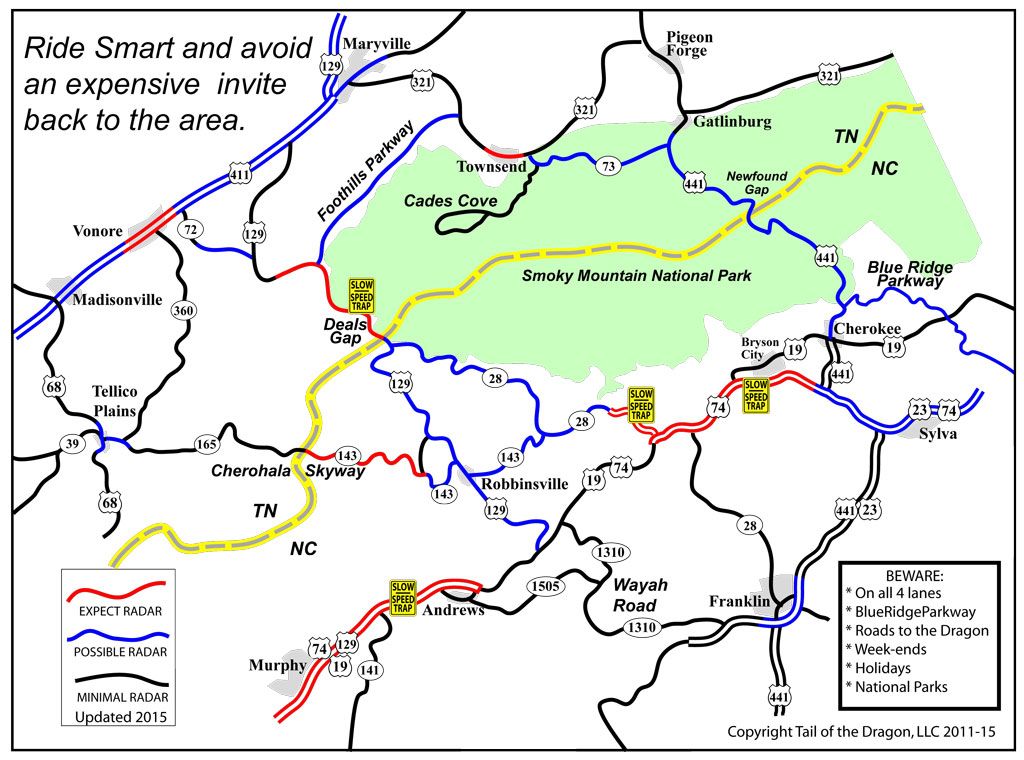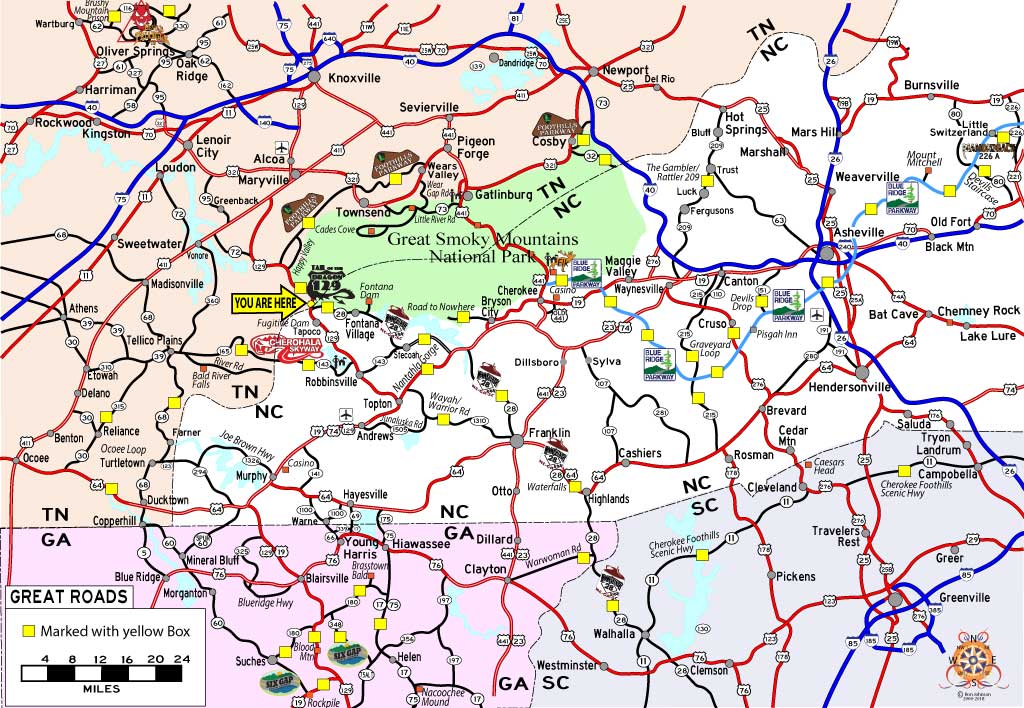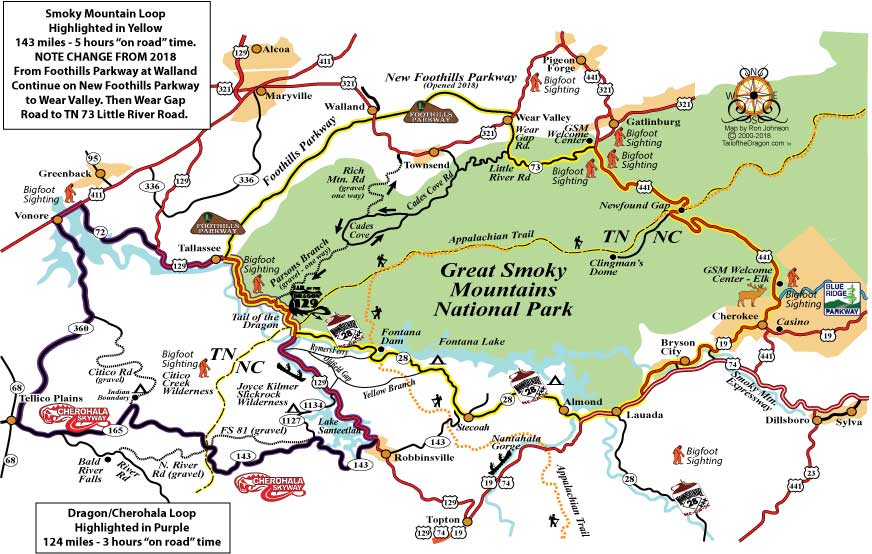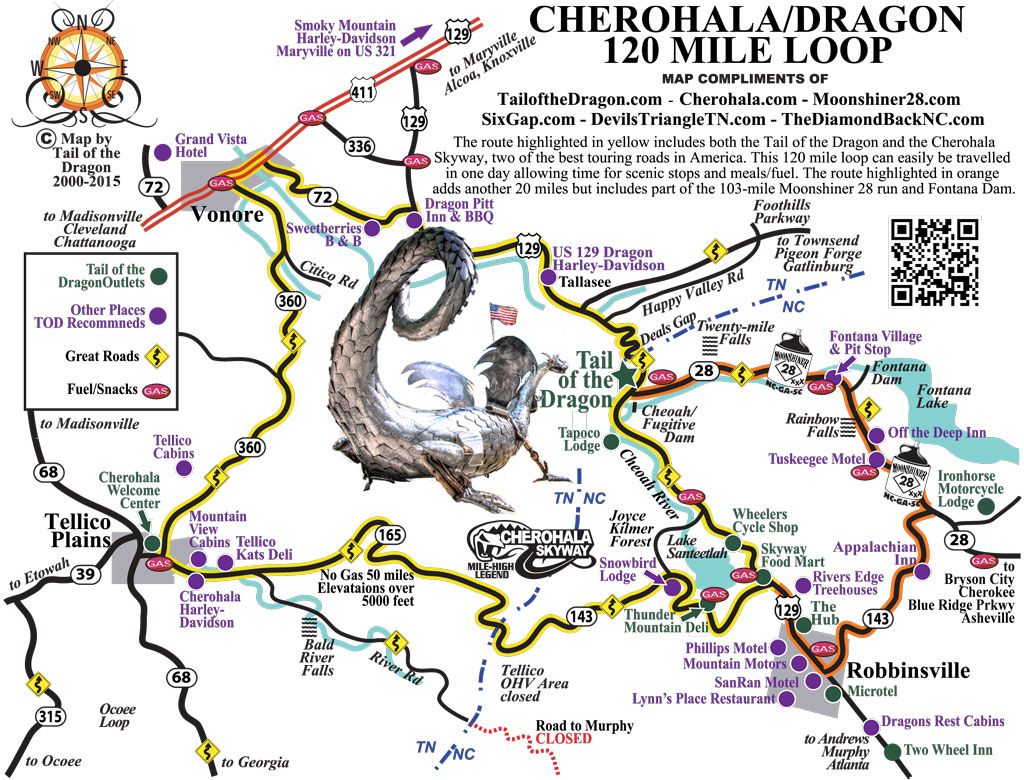Moonshiner 28
Written By Ron Johnson
Edited By Jessica Green
Moonshiner 28, beginning at the Tail of the Dragon on US 129, extends 103 miles southeast through western North Carolina (Franklin and Highlands) before continuing into Georgia and South Carolina, ultimately reaching Walhalla. Once one of the major runs for moonshiners, the road today boasts great twisties, wide sweepers and unmatched scenery.
In addition to the driving experience, Moonshiner 28 takes you through many unique attractions and towns. While driving the route you cross the Eastern Continental Divide which marks the two watersheds of the east coast: the Gulf of Mexico and the Atlantic. Towns like Franklin, Highlands, and Walhalla each offer one of a kind experiences that bring individuals back year after year. Moonshiner 28 offers a variety of road types, from very tight turns in the secluded mountains all the way to sweepers on a 4-lane highway. No matter what type of drive you are seeking, the route gives you the best of everything.
Moonshiner 28, with its winding path through the Smoky Mountain National Park and Blue Ridge Mountains, is sure to lead you to your new favorite nature escape. Near the start of the route lies Fontana Village and Fontana Lake. Once housing for the Fontana Dam construction workers in the 40s, today it is a top of the line resort, beautifully nestled into a secluded area of the mountains. Up next on the drive comes the quaint town of Franklin, located in the heart of the Nantahala National Forest. Franklin is known for its hiking trails, gem mining, and specialty restaurants. Heading south down Moonshiner 28 you will enter Highlands, a quaint town with waterfalls and one of a kind shops and restaurants. The journey ends in the town of Wallhala, known for its hiking trails and whitewater rafting. Each of these stops along the way are one of many reasons Moonshiner 28 is quickly becoming a popular route in the area.
Activities Along the Route:
- Fontana Village: Originally used as housing for the construction of Fontana Dam in the 1940s. Today it is the largest resort destination in our area. Accommodations include cabins, motel and a campground.
- Fontana Dam & Lake – Visit the largest dam in the Tennessee Valley Authority (TVA) system. There are two viewing areas, the lower dam entrance which you will pass first and the top of the dam which slightly veers off from Moonshiner 28. At the top of the dam, you are able to drive on across this massive structure.
- Tsali Recreation Trails – Popular spot for horse/mountain bike riders located on Fontana Lake. Tsali also offers camping and picnic locations.
- Highlands – One of the most popular stops is Dry Falls where after a short hike you can walk underneath the 75-foot falls. The Edwards Inn and Highlands Inn, two hotels in the downtown district, date back to the 1880s and the Moccasin War.
HISTORY
Written By Ron Johnson
Edited By Jessica Green
STORY OF HIGHWAY 28, AKA Moonshiner 28
Portions of North Carolina 28, mainly the section between Franklin and Highlands, date back to 1922. There were early roads along part of this route which connected various small communities, but they were not officially designated and were extremely difficult to travel. The first official road dates back to around 1929, NC 288 connected US 129 to Bryson City.
After the construction of Fontana Dam in the mid-1940s NC 288 was submerged under the newly formed Fontana Lake. The Fontana Project resulted in some 1,300 families being relocated. In the process, twenty-eight cemeteries were moved to higher ground on the northern side of the lake. The Federal Government promised to build a new road along the north shore so families could access these cemeteries. Swain County has been in negotiation with the Federal Government for decades over what has become known as ” The Road to Nowhere”. Descendants of those buried across the lake have to take boats and hike to visit the gravesites. After NC 288 being submerged a new highway was constructed on the southern edge of the lake and designated as a continuance of NC 28 all the way to US 129 near the Tennessee border.
HISTORY OF LOCAL MOONSHINING
What contemptible scoundrel stole the cork from my lunch. – W. C. Fields
Appalachian Mountains have a rich history of moonshiners evading the revenuers. The Whisky Rebellion of 1791 was a result of the Congress under President George Washington laying a tax on alcohol. Most of the distillers of the time were farmers who lived in remote areas where it was difficult to get their grain to market, so moonshine was often made with the excess grain. The farmers’ push back turned into armed rebellion in 1794. One tax collector had his head shaved, his horse stolen and was then tarred and feathered. The suppression of the rebellion proved unpopular and became a detriment to the Federalist Party. The whisky tax was repealed in 1803 in response.
The Civil War found a new whisky tax instituted to fund the Federal Government. The extremely high taxes were as much as eight times the cost of the liquor itself. Small distillers began hiding in the backwoods to avoid the taxes. The Revenue Bureau of the Treasury Department transformed their “collectors” into a policing authority. Thus the “moonshiners” and “revenuers” were born.
Eli Hutsell “Hut” Amarine Moonshiner of East Tennessee 1837-1891
Atkinson, George W. After the Moonshiners: a Book of Thrilling, Yet Truthful Narratives. Wheeling, W. Va.: Frew & Campbell, Printers, 1881. 239 P. Excerpt: P. 18-24, 69-70.
JIM TOM HENDRICK
We met one of the local brewers, Jim Tom Hedrick, back in 1991 as he was “cooking” at a local event. He was quite a character back in those days and became a well-known TV personality in 2012 when he first appeared on The Moonshiners on Discovery Channel.
Hedrick with his thick country drawl, entertained us for an hour with the adventures of his past, no doubt well embellished. He said he was just brewing ethanol, so it was legal.
He went on to become somewhat of a local celebrity after being featured in several interviews, two movies, and appearing in Matt Stillwell’s music video Shine in 2009. He then made it to the big league, starring in The Moonshiners tv series on the Discovery Channel in 2012. Today his face adorns bottles of legal shine sold by Sugarlands Distilling.
As of 2025, a still that was purchased from Hendrick sits proudly in front of the Tail of the Dragon store. According to Jim Tom, back some 50 years ago when he learned to moonshine there were more than a hundred stills in operation around Robbinsville alone. Any that operate today are well hidden.
POPCORN SUTTON
Another moonshiner hailed as a hero in Maggie Valley was Marvin “Popcorn” Sutton. According to him, “the heyday of moonshining was from 1965 to 1972 when you could buy likker about every 200 feet in places.”
One of Popcorn’s last arrests was in 2007 when a fire broke out at his home in Parrotsville and his stills were discovered. He was fined and sentenced to two years’ probation. He was arrested again in 2008 and at his trial the illegal activities dating back to the 1970s were presented. He was sentenced to serve time and would have likely spent only a year or so in prison. He stubbornly refused to accept such treatment and took his own life on March 16, 2009. Today he is a local folk hero for his mountain ways, rugged individualism, and likker making skills. Some suggest that his death was staged and say that he still roams the area.
MOONSHINE AND NASCAR
Another famous moonshine operation was in Wilkes County, NC during the 1950s and 1960s. Willie Clay Call bragged that “my daddy was a moonshiner, and my grandpa was in it too”. His good friend Junior Johnson, whose own father ran a still, learned to drive fast by running shine. “Out on the highway, you’re a-runnin’ for your life.” He goes on to say, “They never caught me a-hauling.”
Like many other runners of the time Johnson’s cars were more powerful than those on the racetrack. The engines were bored and stroked, supercharged and turbocharged. The favorite engine was the Cadillac ambulance V-8s, the biggest engines available. Suspensions were heavily modified to carry the extra weight in the trunk. Most shiners were caught on-foot, not on the highways.
After winning the Daytona 500 in 1960 Junior quit the moonshine business. Today he legally sells Junior Johnson’s Midnight Moon Carolina Moonshine, an 80 proof corn-based liquor.
MOONSHINING TODAY
In the decade of 1954 to 1964 more than 72,000 stills were destroyed by federal agents in most of the southeastern states. However, moonshiners have continued to work illegally in the mountains though many of them are being caught and arrested to this day.
It is legal to own a still, but if you want to produce any alcohol in your still, even for your own personal consumption, you need a federal permit. Under the alternative fuels law, you can make up to 10,000 gallons a year of ethanol, which can power engines when mixed with gasoline.
Today you can purchase legal moonshine in multiple locations around the area. Moonshine distilleries are quite popular and pay homage to their history by continuing to produce some of the best ‘shine they can legally.

